

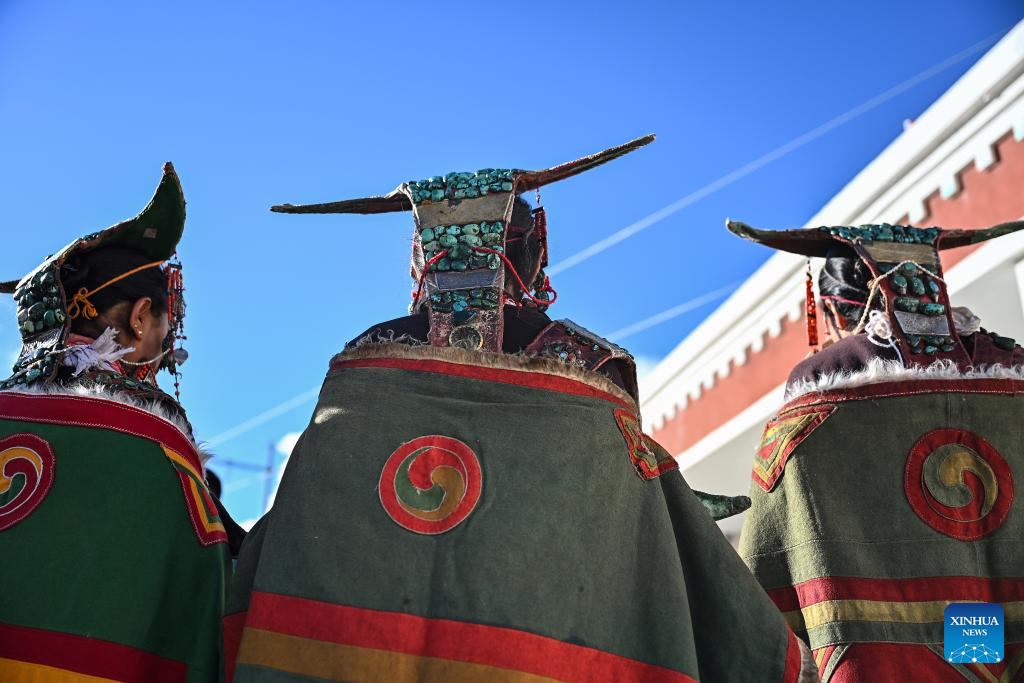
Villagers display folk costume in Kejia Village of Pulan County, southwest China's Xizang Autonomous Region, Sept. 9, 2024.
Originating in Pulan County, Pulan folk costume has been a traditional garment worn at celebrations for over a millennium. Weighing more than 20 kilograms, a piece of this unique costume is usually decorated with rare metals and jewels, like gold, silver, beeswax, coral and turquoise. (Xinhua/Sun Ruibo)
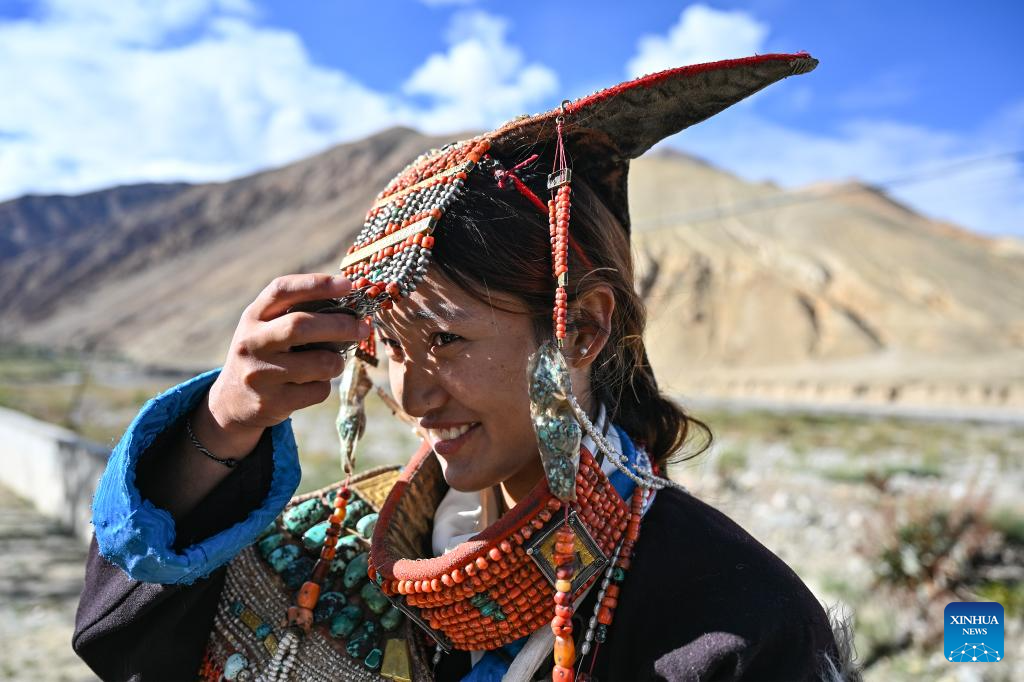
A villager displays folk costume in Kejia Village of Pulan County, southwest China's Xizang Autonomous Region, Sept. 9, 2024.
Originating in Pulan County, Pulan folk costume has been a traditional garment worn at celebrations for over a millennium. Weighing more than 20 kilograms, a piece of this unique costume is usually decorated with rare metals and jewels, like gold, silver, beeswax, coral and turquoise. (Xinhua/Sun Ruibo)

Villagers dressed in folk costume dance in Kejia Village of Pulan County, southwest China's Xizang Autonomous Region, Sept. 9, 2024.
Originating in Pulan County, Pulan folk costume has been a traditional garment worn at celebrations for over a millennium. Weighing more than 20 kilograms, a piece of this unique costume is usually decorated with rare metals and jewels, like gold, silver, beeswax, coral and turquoise. (Xinhua/Sun Ruibo)
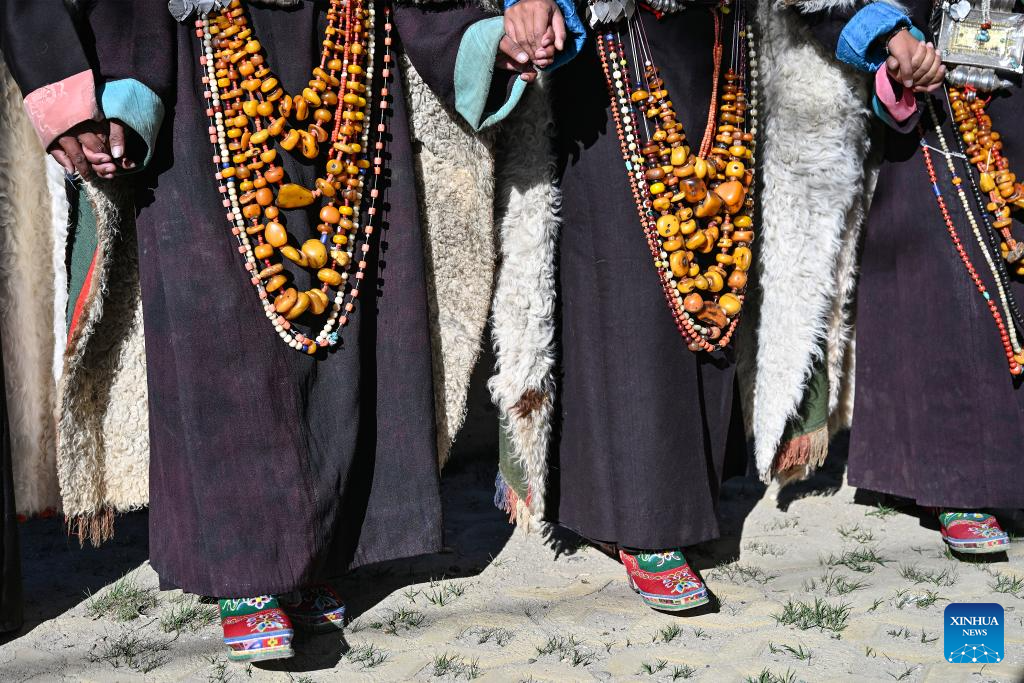
Villagers dressed in folk costume dance in Kejia Village of Pulan County, southwest China's Xizang Autonomous Region, Sept. 9, 2024.
Originating in Pulan County, Pulan folk costume has been a traditional garment worn at celebrations for over a millennium. Weighing more than 20 kilograms, a piece of this unique costume is usually decorated with rare metals and jewels, like gold, silver, beeswax, coral and turquoise. (Xinhua/Sun Ruibo)
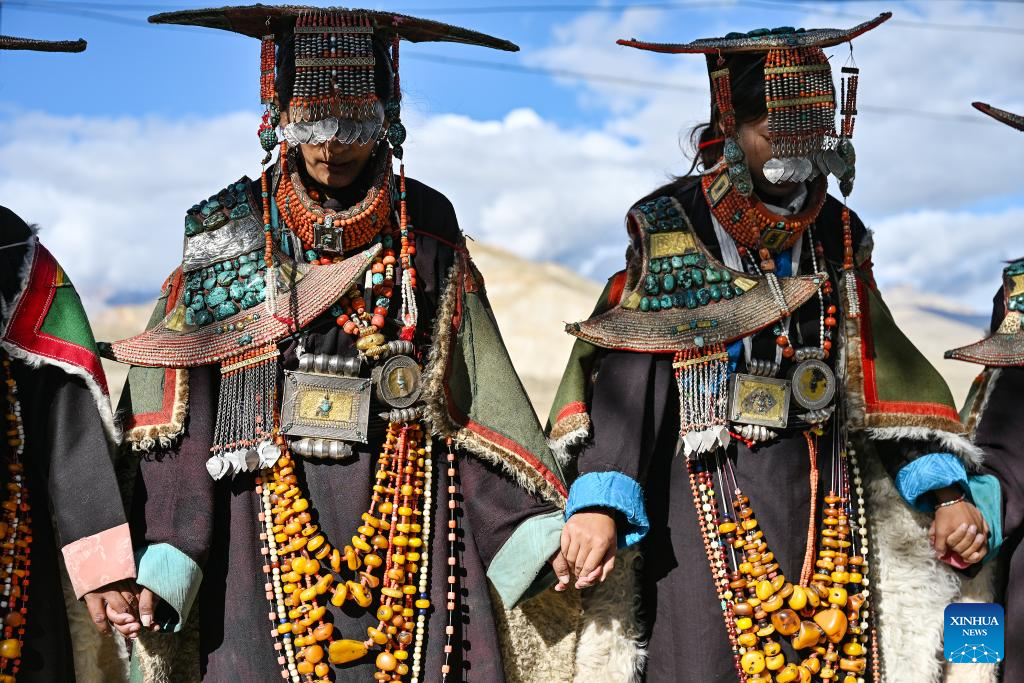
Villagers dressed in folk costume dance in Kejia Village of Pulan County, southwest China's Xizang Autonomous Region, Sept. 9, 2024.
Originating in Pulan County, Pulan folk costume has been a traditional garment worn at celebrations for over a millennium. Weighing more than 20 kilograms, a piece of this unique costume is usually decorated with rare metals and jewels, like gold, silver, beeswax, coral and turquoise. (Xinhua/Sun Ruibo)
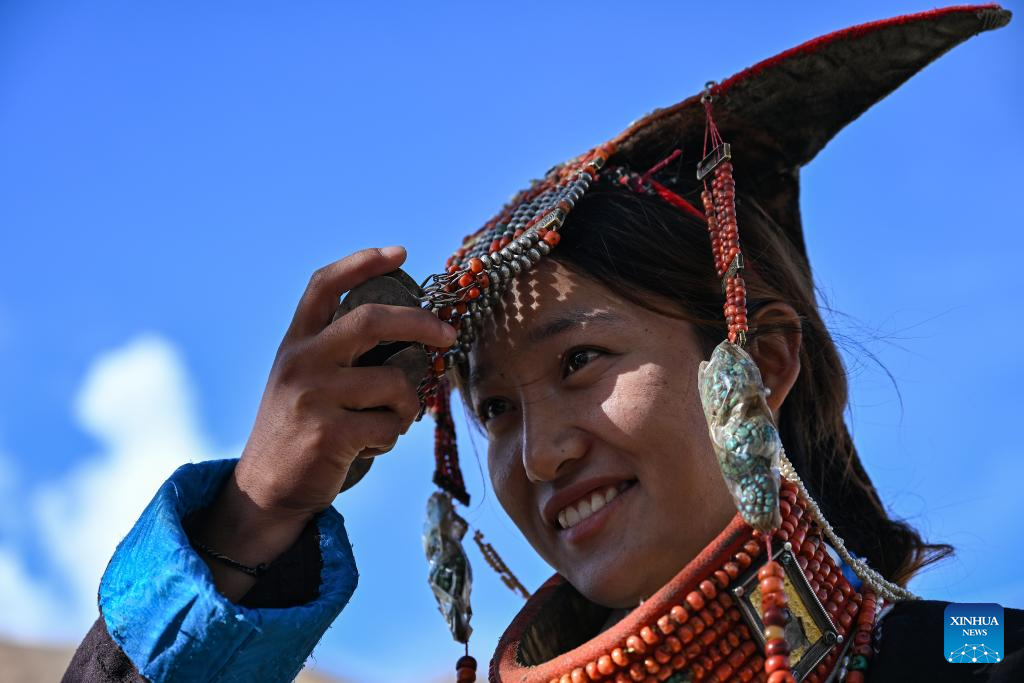
A villager displays folk costume in Kejia Village of Pulan County, southwest China's Xizang Autonomous Region, Sept. 9, 2024.
Originating in Pulan County, Pulan folk costume has been a traditional garment worn at celebrations for over a millennium. Weighing more than 20 kilograms, a piece of this unique costume is usually decorated with rare metals and jewels, like gold, silver, beeswax, coral and turquoise. (Xinhua/Sun Ruibo)

A villager displays folk costume in Kejia Village of Pulan County, southwest China's Xizang Autonomous Region, Sept. 9, 2024.
Originating in Pulan County, Pulan folk costume has been a traditional garment worn at celebrations for over a millennium. Weighing more than 20 kilograms, a piece of this unique costume is usually decorated with rare metals and jewels, like gold, silver, beeswax, coral and turquoise. (Xinhua/Sun Ruibo)
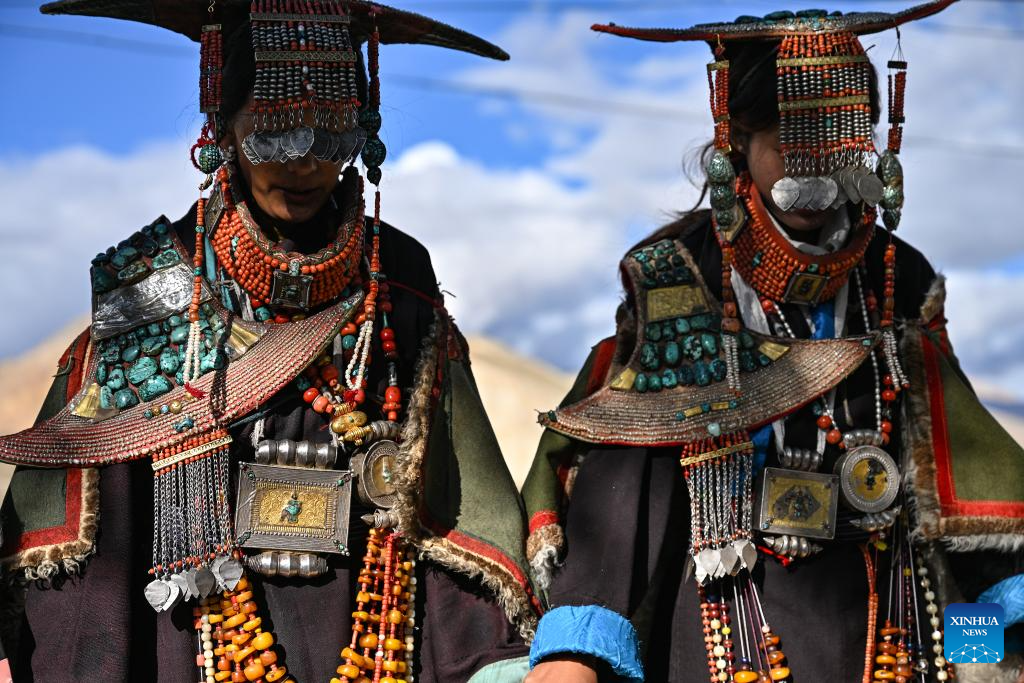
Villagers dressed in folk costume dance in Kejia Village of Pulan County, southwest China's Xizang Autonomous Region, Sept. 9, 2024.
Originating in Pulan County, Pulan folk costume has been a traditional garment worn at celebrations for over a millennium. Weighing more than 20 kilograms, a piece of this unique costume is usually decorated with rare metals and jewels, like gold, silver, beeswax, coral and turquoise. (Xinhua/Sun Ruibo)
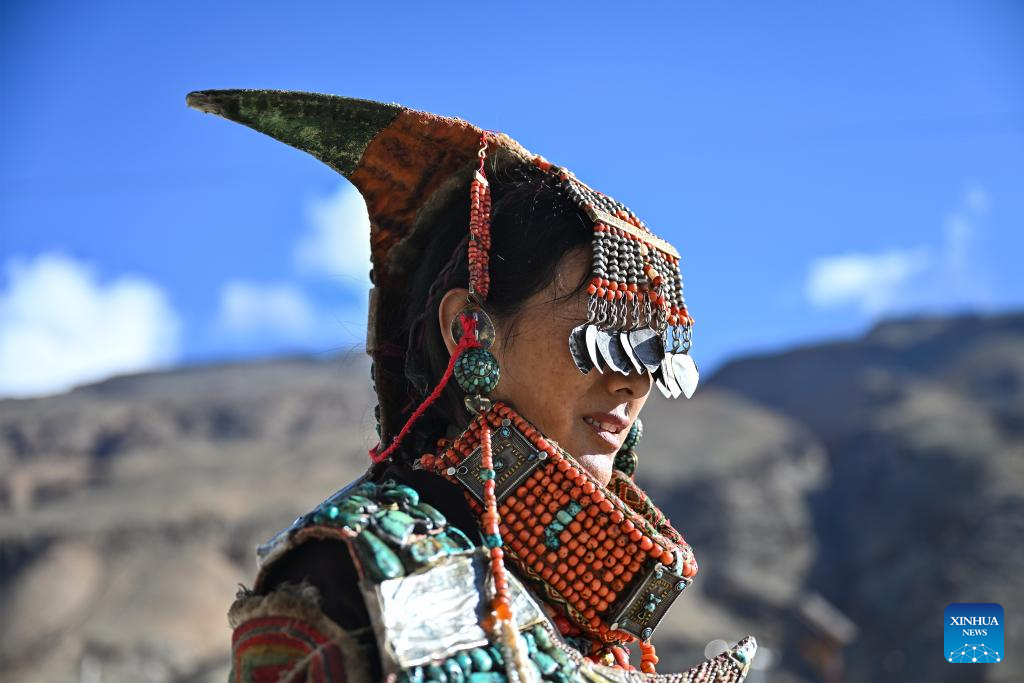
A villager displays folk costume in Kejia Village of Pulan County, southwest China's Xizang Autonomous Region, Sept. 9, 2024.
Originating in Pulan County, Pulan folk costume has been a traditional garment worn at celebrations for over a millennium. Weighing more than 20 kilograms, a piece of this unique costume is usually decorated with rare metals and jewels, like gold, silver, beeswax, coral and turquoise. (Xinhua/Sun Ruibo)
点击右上角![]() 微信好友
微信好友
 朋友圈
朋友圈

请使用浏览器分享功能进行分享
